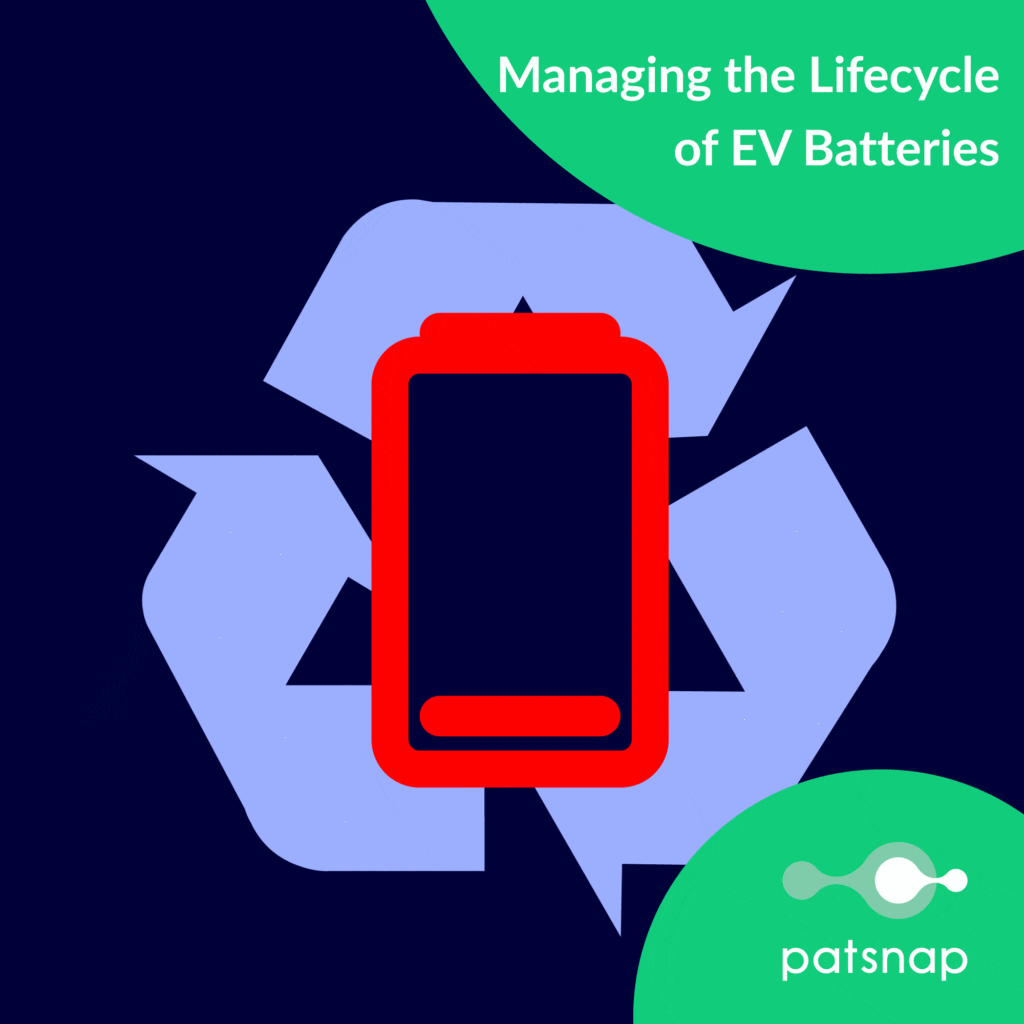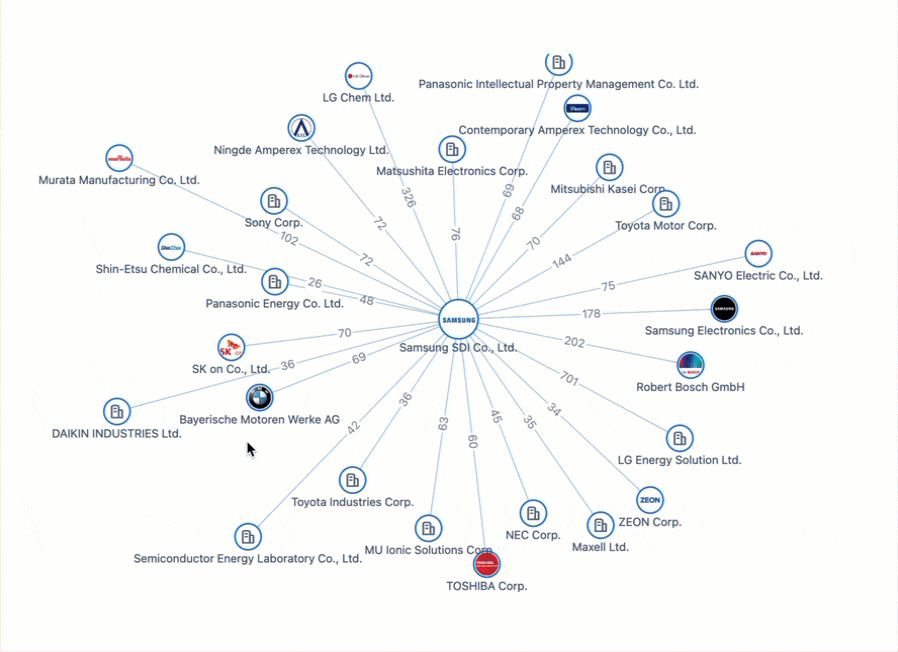Managing the Lifecycle of EV Batteries
The global electric vehicle market size is expected to be worth $693.70 billion by 2030, representing a compound annual growth rate of 17.30%. As electric vehicles (EVs) increase in popularity, there is a growing need to manage the lifecycle of EV batteries. By understanding the lifecycle of EV batteries, EV performance is optimized and any negative environmental impacts are minimized.
In this article, we explore what EV batteries are, the hidden costs associated with EVs, and innovative solutions that facilitate the management of EV battery lifecycles.
Jump to . . .
- Battery Production
- Battery Degradation
- Charging Infrastructure
- Electricity Demand
- Disposal and Recycling
- Initial Purchase Price
- Thermal Management Systems
- Second-life Applications
- Battery Remanufacturing and Refurbishment
- Battery Recycling and Material Recovery
- Advanced Battery Chemistries
- Collaboration and Standardization

What are Electric Vehicles?
Electric vehicles (EVs) are automobiles powered by one or more electric motors, utilizing electrical energy stored in rechargeable batteries as their primary source of propulsion.
Unlike conventional internal combustion engine (ICE) vehicles that rely on fossil fuels, EVs operate with zero tailpipe emissions, making them an environmentally-friendly alternative for transportation. They can be categorized into two main types: Battery Electric Vehicles (BEVs) that run solely on electric power and Plug-in Hybrid Electric Vehicles (PHEVs) that combine electric motors with internal combustion engines.
EVs offer advantages such as reduced greenhouse gas emissions, lower fuel costs, and quieter operation, playing a pivotal role in the transition towards sustainable and clean transportation systems.
What are EV Batteries?
Electric vehicle batteries are rechargeable energy storage devices that power the electric motors in EVs. These batteries typically use lithium-ion technology due to their high energy density and long-lasting performance. Lithium-ion batteries consist of multiple cells that store electrical energy chemically, allowing for efficient power delivery to the vehicle’s motor.
What are the Hidden Costs Associated with EVs?
EVs offer numerous benefits, but there are certain hidden costs associated with their adoption that should be considered. One significant cost that acts as a barrier to adoption is the potential expense of replacing an EV battery, which can range from $5,000 to $30,000 depending on the manufacturer and specific vehicle model. In addition to battery replacement, there are other costs that should be considered:
Battery Production:
EVs require large battery packs, typically using lithium-ion technology. The production of these batteries involves the extraction and processing of raw materials such as lithium, cobalt, and nickel. The mining of these minerals can have significant environmental and social impacts, including habitat destruction, water pollution, and labor concerns.
Battery Degradation:
EV batteries gradually lose their capacity over time, resulting in reduced driving range. This degradation is influenced by factors like temperature, charging habits, and usage patterns. As the battery’s performance declines, it may necessitate replacement or repair, incurring additional costs.
Charging Infrastructure:
Although EV charging stations are expanding, the availability and accessibility of charging infrastructure vary by region. Building a robust charging network requires significant investment in infrastructure development and grid upgrades, which can result in costs passed onto EV owners or the public.
Electricity Demand:
Widespread adoption of EVs increases electricity demand, particularly during peak charging periods. Additional power generation and grid infrastructure may be required to meet this increased demand, leading to potential costs for expanding power generation capacity and improving grid reliability.
Disposal and Recycling:
EV batteries have a limited lifespan, typically around 8-10 years. Proper disposal and recycling of end-of-life batteries are essential to minimize environmental impact. Disposal methods that do not adhere to proper regulations can result in hazardous waste, while recycling processes can be costly and complex due to the need for specialized facilities and technologies.
Initial Purchase Price:
Although the long-term operational costs of EVs are generally lower than those of conventional vehicles, the upfront purchase price of EVs is often higher. This is primarily due to the cost of battery technology, which represents a significant portion of the vehicle’s total cost. However, as technology advances and economies of scale improve, the cost of EVs is expected to decrease.
Innovative Solutions that Extend EV Lifecycles
Innovative solutions that extend the life of EV batteries and minimize environmental impact are crucial for maximizing sustainability and optimizing the overall lifecycle of these batteries. Here are several original and in-depth solutions:
Battery Management Systems (BMS) and Advanced Analytics: Implementing sophisticated BMS technologies can significantly enhance battery performance and extend its lifespan. BMS monitors and controls key parameters such as state of charge, state of health, temperature, and charging/discharging rates. By leveraging advanced analytics, BMS can optimize charging patterns, prevent overcharging or deep discharging, and maintain optimal operating conditions. This helps mitigate battery degradation, ensuring longer lasting and more efficient batteries.
Thermal Management Systems:
Effective thermal management systems play a vital role in extending battery life. These systems regulate the battery’s temperature to ensure it operates within the optimal range. By preventing extreme temperature fluctuations, thermal management systems reduce stress on the battery, mitigate degradation, and enhance overall performance and longevity.
Second-Life Applications:
Retired EV batteries that no longer meet the demanding requirements for vehicular use can still be repurposed for secondary applications. These “second life” applications include stationary energy storage systems. By repurposing batteries for stationary use, such as in homes, commercial buildings, or renewable energy grids, the remaining battery capacity can be utilized effectively, prolonging their lifespan and reducing waste.
Battery Remanufacturing and Refurbishment:
Remanufacturing and refurbishing EV batteries involves repairing or replacing individual cells or modules within a battery pack, rather than replacing the entire pack. This approach reduces costs and environmental impact by extending the life of batteries and minimizing waste. Through careful testing, diagnosis, and selective replacement, remanufactured or refurbished batteries can be restored to a near-original state, maximizing their utility.
Battery Recycling and Material Recovery:
Efficient battery recycling and material recovery processes are critical for minimizing environmental impact and conserving valuable resources. Advanced recycling technologies can extract and purify key materials such as lithium, cobalt, nickel, and other rare metals from spent batteries. These recovered materials can be reused in the production of new batteries, reducing the reliance on raw material extraction and minimizing the ecological footprint.
Advanced Battery Chemistries:
Ongoing research and development efforts are focused on advancing battery chemistries beyond traditional lithium-ion technology. Promising alternatives include solid-state batteries, lithium-sulfur batteries, and other emerging technologies. These advancements aim to improve energy density, charging speed, lifespan, and safety. By developing more efficient and sustainable battery chemistries, the overall environmental impact of EV batteries can be reduced.
Collaboration and Standardization:
Collaboration among stakeholders, including automakers, battery manufacturers, researchers, and policymakers, is crucial for developing common standards and best practices. This collaboration can streamline battery production, recycling processes, and sustainable end-of-life management. Establishing clear guidelines and regulations encourages responsible practices and ensures the implementation of innovative solutions.
By incorporating these innovative solutions into the management of EV battery lifecycles, we can optimize battery performance, extend their longevity, and minimize the environmental impact associated with the production, use, and disposal of EV batteries. Such efforts contribute to the sustainable development of the electric vehicle industry and the transition towards a cleaner and greener transportation system.
To learn more about trends shaping the future of the EV industry, download our Automotive Deep Tech Report.
Your recommended content
-

Powering the Future of Electric Vehicles: The Battle for Battery Innovation and Patents
Category: Article | Category: battery technology | Category: electric vehicle | Category: EV | Category: lithium ion | Category: lithium ion battery | Category: NEV | Category: new energy vehicles
Monday, April 22, 2024
In the ever-evolving landscape of innovation, the electric vehicle (EV) industry stands as a beacon of technological transformation. As we explore the patents propelling the EV revolution, Apple's venture serves as a poignant example of the challenges even industry giants face in this competitive arena. Join us on a journey through the global patent landscape, where the quest for superior power solutions unfolds, and where the true pioneers of the EV revolution are making their mark.
-

The People vs. AI: Who Owns Ideas in the Era of Generative Artificial Intelligence?
Category: AI era | Category: AI-driven creativity | Category: AI-generated creations | Category: Article | Category: copyright and patent rights | Category: digital innovation | Category: innovation | Category: intellectual property law | Category: legal implications | Category: OpenAI Sora | Category: patent law | Category: Research Tag | Category: Sora | Category: text-to-video generative AI | Category: who owns AI
Monday, April 22, 2024
OpenAI’s Sora software, a text-to-video generative AI model, recently made headlines showing a series of 1-paragraph prompts and some high-quality footage generated based on those prompts. It is a rightfully impressive showing, but it’s still too early to identify how IP law will be disrupted by generative AI. This editorial delves into the multifaceted landscape of Sora's impact, offering insights into the future of innovation and ownership in the AI era.
-

Patsnap Releases 2023 Global Innovation Report: The Brilliant Names to the Dynamic Landscape of Innovation
Category: Article | Category: eBook | Category: Research Tag | Category: Whitepaper
Wednesday, November 15, 2023
The Global Innovation 100 and Global Disruption 50 transcend individual entities, each representing a small innovation ecosystem with numerous subsidiaries. Through the innovation data of these companies, we gain insights into the characteristics, structures, and trends of global innovation.